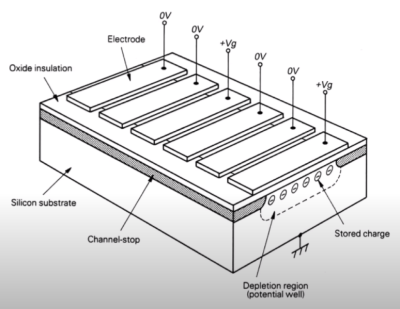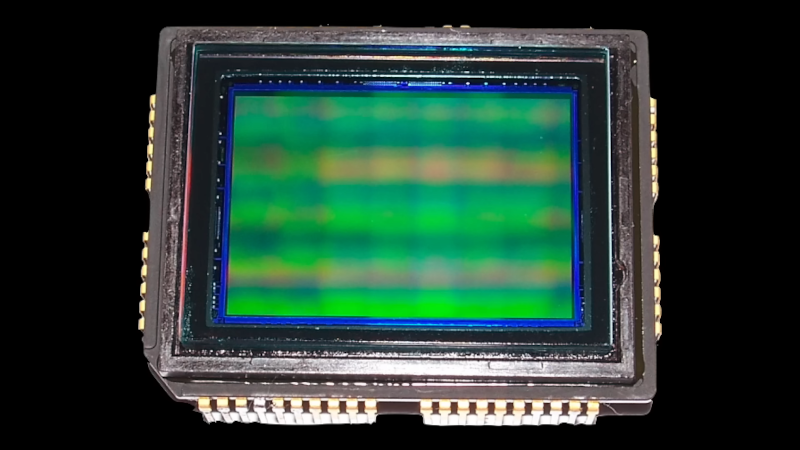Have you ever thought how amazing it is that every bit of DRAM in your computer requires a teeny tiny capacitor? A 16 GB DRAM has 128 billion little capacitors, one for each bit. However, that’s not the only densely-packed IC you probably use daily. The other one is the image sensor in your camera, which is probably in your phone. The ICs have a tremendous number of tiny silicon photosensors, and [Asianometry] explains how they work in the video you can see below.
The story starts way back in the 1800s when Hertz noticed that light could knock electrons out of their normal orbits. He couldn’t explain exactly what was happening, especially since the light intensity didn’t correlate to the energy of the electrons, only the number of them. It took Einstein to figure out what was going on, and early devices that used the principle were photomultiplier tubes, which are extremely sensitive. However, they were bulky, and an array of even dozens of them would be gigantic.
 Semiconductor devices use silicon. Bell Labs was working on bubble memory, which was a way of creating memory that was never very popular. However, as a byproduct, the researchers realized that moving charges around for memory could also move around charges from photosensitive diodes. The key idea was that it was harder to connect many photodiodes than it was to create the photodiodes. Using the charge-coupled device or CCD method, the chip could manipulate the charges to reduce the number of connections to the chip.
Semiconductor devices use silicon. Bell Labs was working on bubble memory, which was a way of creating memory that was never very popular. However, as a byproduct, the researchers realized that moving charges around for memory could also move around charges from photosensitive diodes. The key idea was that it was harder to connect many photodiodes than it was to create the photodiodes. Using the charge-coupled device or CCD method, the chip could manipulate the charges to reduce the number of connections to the chip.
CCDs opened up the digital image market, but it has some problems. The next stage was CMOS chips. They’d been around for a while since IBM produced the scanistor, but the sensitivity of these CMOS image chips was poor. Since most people were happy with CCD, there wasn’t as much research on CMOS. However, CMOS sensors would eventually become more capable, and the video explains how it works.
We’ve looked at image sensors before, too. The way you read them can make a big difference in your images.

















Asianometry is an amazing channel ! Subscribe !
I built a framing camera before.
Heinrich Hertz died at 36. It’s a wonder he had time todo all he did.
They say now he died from a rare autoimmune disease, but how do they know long after the fact? But I have the same rare disease.
DNA most likely.
False by almost a century: “…in the 1800s when Hertz noticed…”
Hertz noticed it in the 1880s.
The Battle of Trafalgar (1805) was in the 1800s.
Your choice to interpret this as to the decades being the significant unit is equally false. 1805 isn’t in the 1800s, it’s in 1805. 1800 is in the 1800s.
If your having trouble wrapping your head around that, Your mind will absolutely be blown away when you learn how they number centuries
About 1979,a friend electrical wiz told me about the coming ccd, i was just hoping for better and affordable video cameras, they cost like a car and the image was washed, with trailing lights.